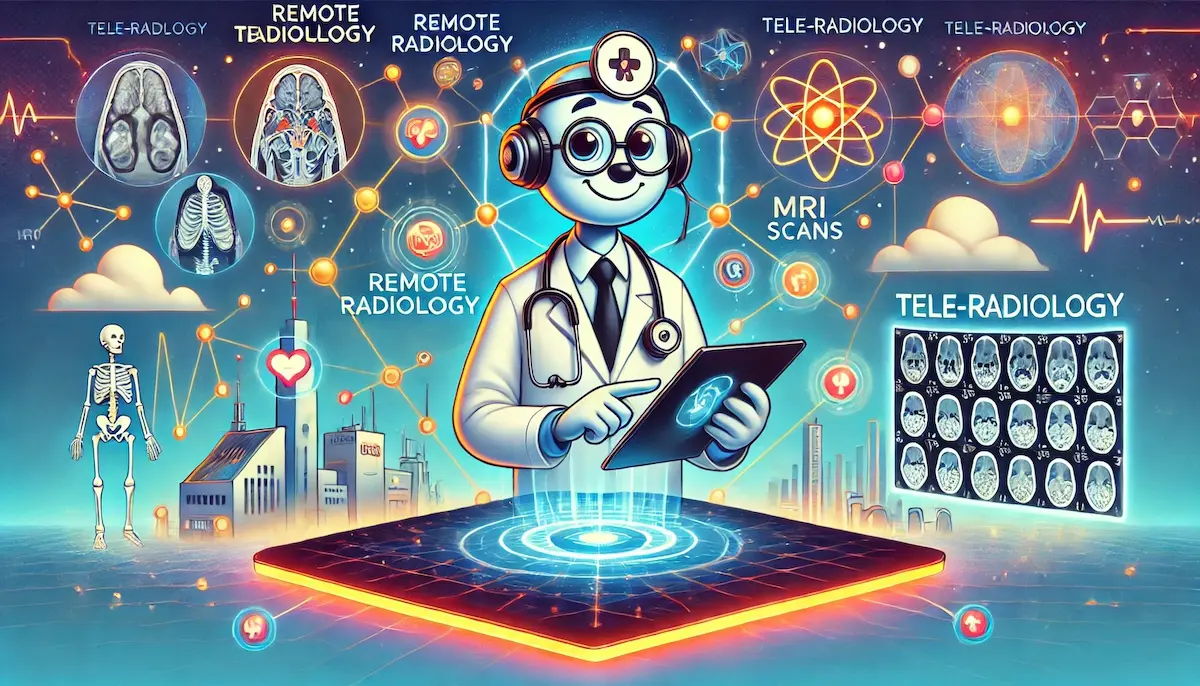Tele-radiology is the practice of transmitting radiological images, such as X-rays, CT scans, and MRIs, from one location to another for the purposes of interpretation and consultation. This innovative approach leverages telecommunications technology to provide timely and expert radiological analysis, regardless of geographical barriers. Tele-radiology is revolutionizing the field of radiology by improving access to diagnostic services and enhancing patient care.
The Evolution of Tele-radiology
Tele-radiology emerged as a response to the growing need for specialized radiological services, especially in remote or underserved areas. The advent of digital imaging and high-speed internet has significantly advanced the field, allowing for the rapid transmission of high-quality images. Early tele-radiology systems relied on simple transmission methods, but today’s sophisticated platforms offer real-time, interactive capabilities, facilitating immediate consultations and collaborative diagnosis.
Key Components of Tele-radiology
Image Acquisition and Transmission
The first step in tele-radiology involves acquiring digital images using various radiological modalities, such as X-rays, CT scans, MRIs, or ultrasound. These images are then securely transmitted to a radiologist or a specialized tele-radiology service provider. Advanced encryption ensures patient privacy and compliance with regulatory standards like HIPAA (Health Insurance Portability and Accountability Act).
Image Interpretation
Once the images are received, they are interpreted by a qualified radiologist who provides a detailed report. Tele-radiology allows radiologists to work remotely, which can be particularly beneficial in regions with a shortage of radiology experts. The radiologist can review the images using high-resolution monitors and specialized software that enhances the diagnostic process.
Reporting and Consultation
After interpreting the images, the radiologist generates a report that is sent back to the referring physician. In many cases, tele-radiology systems support interactive consultations, enabling real-time communication between the radiologist and the referring doctor. This collaborative approach ensures that complex cases receive thorough evaluation and that the patient receives the best possible care.
Benefits of Tele-radiology
Improved Access to Care
Tele-radiology bridges the gap between urban and rural healthcare facilities by providing remote access to expert radiological services. This is particularly important in areas where there is a lack of specialized radiologists. Patients in remote locations can receive accurate diagnoses and timely treatment without the need to travel long distances.
Enhanced Efficiency
By leveraging tele-radiology, healthcare facilities can operate more efficiently. Radiologists can provide 24/7 coverage, ensuring that urgent cases are reviewed promptly. This reduces waiting times for patients and accelerates the diagnostic process, leading to quicker treatment decisions.
Cost Savings
Tele-radiology can result in significant cost savings for healthcare providers. By outsourcing radiological services, hospitals can reduce the need for on-site radiologists, lower operational costs, and optimize resource allocation. Additionally, tele-radiology can help avoid unnecessary patient transfers, further reducing expenses.
Quality and Accuracy
Tele-radiology platforms often use advanced software that enhances image quality and aids in accurate diagnosis. Furthermore, having access to a network of specialized radiologists can improve the overall quality of care, as complex cases can be reviewed by experts with specific expertise.
Challenges and Future Directions
Despite its numerous benefits, tele-radiology faces several challenges. Ensuring data security and patient privacy is paramount, requiring robust encryption and compliance with legal standards. Additionally, there can be technical issues related to image transmission and compatibility between different systems. However, ongoing advancements in technology and telecommunications are continuously addressing these challenges.
The future of tele-radiology looks promising, with the integration of artificial intelligence (AI) and machine learning expected to further enhance diagnostic accuracy and efficiency. AI algorithms can assist radiologists by quickly analyzing large volumes of images and highlighting areas of concern, streamlining the diagnostic process.
Tele-radiology is transforming the field of radiology by making expert diagnostic services more accessible, efficient, and cost-effective. As technology continues to advance, tele-radiology will play an increasingly vital role in delivering high-quality healthcare to patients around the world.
Blockfine thanks you for reading and hopes you found this article helpful.
